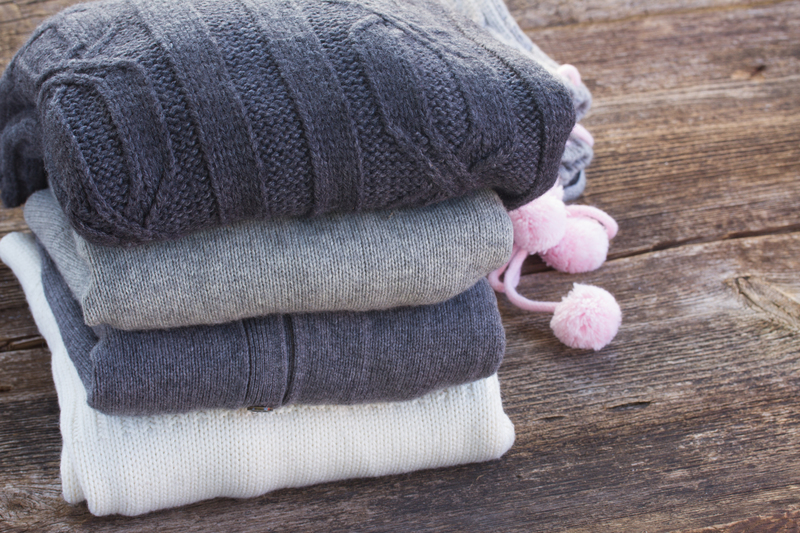Creative and Safe Ways to Get Rid of PPE Waste
In the global fight against pandemics and infectious diseases, Personal Protective Equipment (PPE) such as masks, gloves, face shields, and gowns have become everyday essentials. While they protect us from viruses and bacteria, they also contribute to a growing environmental issue--PPE waste. As the usage of PPE increases exponentially, so does the challenge of disposing of it safely and sustainably.
Proper management and innovative methods for handling PPE waste are more critical than ever. This comprehensive guide explores creative and safe ways to dispose of PPE waste, helping to protect both people and the planet.

Understanding PPE Waste and Its Environmental Impact
PPE waste refers to discarded items such as surgical masks, N95 respirators, disposable gloves, face shields, and protective gowns, most of which are made from single-use plastics. An estimated 129 billion face masks and 65 billion gloves are used each month globally. The improper disposal of this waste can lead to significant environmental challenges, including:
- Pollution of land, rivers, and oceans
- Harm to wildlife due to ingestion or entanglement
- Increase in microplastics that persist in ecosystems
- Risks to public health due to improper handling and exposure
Therefore, it is essential to adopt safe, creative, and effective methods for getting rid of PPE waste.
Why Proper Disposal of PPE Waste Is Essential
Disposing of PPE waste isn't just about keeping the environment clean. It's about interrupting the chain of infection and preventing further health risks. Improper disposal can lead to:
- Spread of infectious diseases
- Contamination of water sources
- Increased presence of microplastics in food chains
- Harmful emissions from incineration practices
By implementing innovative approaches to PPE waste disposal, communities and individuals can help reduce the impact on the environment and public health.
Traditional Methods of Getting Rid of PPE Waste
1. Landfilling
Landfilling is the most common method, which simply involves disposing of used PPE in designated landfill sites. However, this is not sustainable in the long term, as PPE plastics do not biodegrade and remain in the environment for hundreds of years.
2. Incineration
Incineration involves the burning of contaminated PPE waste at high temperatures to safely destroy pathogens. While this method reduces the risk of infection, it can release toxic gases and greenhouse emissions, thus contributing to air pollution.
Problems with Conventional Methods
- High environmental costs due to toxic emissions and persistent waste
- Potentially unsafe for workers managing the waste
- Not scalable for the massive surge in PPE consumption
These methods highlight the need for safer and more creative PPE waste disposal strategies.
Creative and Safe Alternatives for PPE Waste Disposal
1. Upcycling and Repurposing PPE Waste
Upcycling is a sustainable method that turns used PPE into valuable new products. Creative innovators worldwide have developed processes that transform PPE plastics into useful items such as:
- Construction bricks for homes or public spaces
- Plastic lumber for benches or fencing
- Road surfacing materials
For example, organizations in India and the UK have successfully used recycled PPE to build roads and pavement tiles. Upcycling not only keeps waste out of landfills but also gives it a new purpose, reducing the demand for virgin materials.
2. Specialized Recycling Programs
Many PPE materials are technically recyclable, but standard recycling facilities may not process contaminated clinical waste. However, specialized take-back programs and recycling schemes exist that safely process and convert PPE into raw materials.
- TerraCycle and similar organizations offer PPE recycling boxes, allowing businesses and individuals to ship used PPE for specialized recycling.
- Some medical facilities work with industrial partners to sterilize, shred, and melt PPE waste into plastic pellets for manufacturing.
Such initiatives provide eco-friendly ways to rid the environment of PPE waste while promoting a circular economy.
3. Waste-to-Energy Solutions
Emerging waste-to-energy technologies offer safe and effective solutions for PPE waste disposal. Instead of traditional incineration, some facilities use advanced thermal treatments like gasification or pyrolysis to convert PPE waste into:
- Electricity
- Hydrogen fuel
- Synthetic oils or gases
These methods minimize harmful emissions and offer a sustainable way to harness energy from otherwise non-recyclable PPE materials.
4. Biodegradable and Compostable PPE
The future of PPE may lie in materials science. Researchers and manufacturers are developing:
- Masks, gloves, and gowns made from biodegradable natural fibers such as hemp, bamboo, or corn starch
- Compostable face shields and aprons that break down in industrial composters
Switching to compostable PPE can drastically reduce future waste, though proper programs are needed to separate and process these materials.
5. Safe Community PPE Collection Points
Local governments and organizations can establish clearly-identified PPE collection and drop-off points. Clear communication and visible signage ensure that residents know where to safely dispose of used PPE, keeping it out of regular waste streams.
- Hospitals, pharmacies, and grocery stores can offer bins for mask and glove collection
- Community clean-up drives can target littered PPE in public spaces
- Combination with education campaigns builds community awareness and participation
How to Safely Dispose of PPE Waste at Home
Step-by-Step Safety Guide
- Do not touch the outside of used PPE with bare hands. Always use gloves or a tissue when handling discarded PPE.
- Place used PPE in a dedicated, leak-proof trash bag.
- Tie the bag securely before placing it in your outdoor bin.
- Wash your hands thoroughly with soap and water after disposal.
- Do not attempt to recycle contaminated PPE in standard curbside bins. Use specialized take-back programs if available.
These precautions prevent the risk of secondary contamination and pathogen spread.
Creative Tips for Households
- Reuse where safe and possible: Cloth masks and washable gloves reduce waste and can be sanitized for regular use.
- Join community take-back initiatives: Check if your local pharmacy or health clinic offers PPE collection programs.
- Consider eco-friendly PPE brands: Choose biodegradable or reusable PPE products when shopping.
Innovations in PPE Disposal: Global Perspectives
Asia: Turning PPE Into Building Materials
In India, several startups are collecting used face masks and face shields from hospitals and converting them into polypropene-based construction bricks. These bricks are used for building walkways, public toilets, and more--a prime example of creative PPE waste management.
Europe: Integrating PPE Recycling into Circular Economy Models
The United Kingdom and several European countries have piloted PPE-specific recycling points in supermarkets and transport hubs, using the collected waste for creating industrial raw materials.
North America: Education and Public Awareness
In the U.S., public health agencies run campaigns to raise awareness on how to safely dispose of PPE waste and encourage businesses to enroll in PPE recycling or take-back programs.
Common Mistakes to Avoid When Disposing of PPE Waste
- Flushing masks or gloves down toilets or sinks: They clog sewage systems and harm marine life.
- Littering PPE in public spaces: This creates unsanitary conditions and pollutes the environment.
- Trying to recycle contaminated PPE in regular recycling: This risks contaminating the entire batch and endangering recycling center workers.
The Role of Businesses and Institutions in PPE Waste Management
Workplace Strategies
- Set up separate bins for PPE waste in offices, factories, and healthcare facilities.
- Partner with commercial PPE recycling providers for safe disposal and traceability.
- Provide reusable or biodegradable PPE options for employees where practical.
- Incorporate PPE waste management into occupational health and safety training.
Corporate Social Responsibility
Businesses can lead by example, investing in PPE waste innovation and supporting research into sustainable materials or recycling technologies.
Best Practices for Large-Scale PPE Waste Reduction
- Design PPE for disassembly: Create products where plastics can be easily separated and recycled.
- Promote manufacturer take-back programs: Encourage brands to reclaim and responsibly process their used PPE products.
- Support government regulations: Advocate for strong policies and incentives for PPE waste reduction and research.
Summary: Building a Safer and Greener Future
The surge in PPE usage during global health crises is a stark reminder of our interconnectedness--both for public health and our environment. Creative and safe ways to get rid of PPE waste are not only possible, but essential. By integrating upcycling, specialized recycling programs, innovative energy conversion, switchovers to biodegradable products, and strong community action, we can protect the environment and future generations.
Let's all play our part--whether at home, in our businesses, or within our communities--to ensure that the very gear that keeps us safe does not threaten our planet.

FAQs on PPE Waste Disposal
What kind of PPE can be recycled?
Most single-use PPE is made from plastics like polypropylene, which can technically be recycled in specialized facilities. However, contaminated PPE must be sterilized first. Check with local programs for approval.
Can I burn PPE waste at home?
No. Burning PPE waste at home is dangerous and can release toxic fumes. Always use municipal or authorized disposal methods.
Are there reusable alternatives to PPE?
Yes. Cloth masks, washable gloves, and reusable face shields are widely available and help reduce PPE waste when used and sanitized properly.
Conclusion
Managing PPE waste safely and creatively is a shared responsibility. Simple actions, conscious choices, and innovative solutions will help us tackle the PPE waste crisis--safeguarding our health and our planet for years to come.